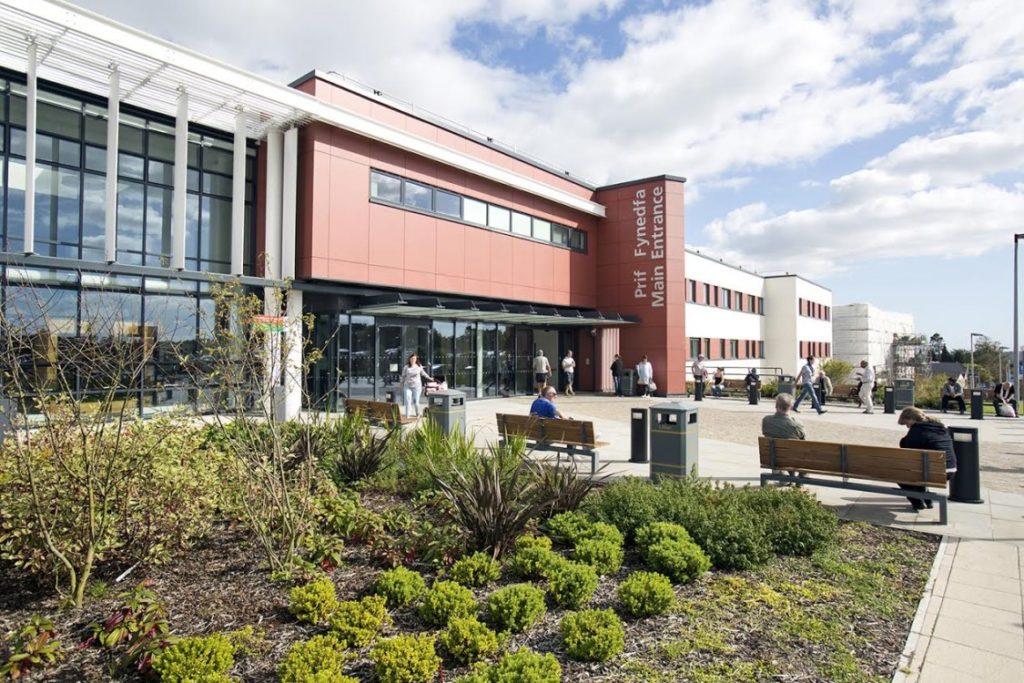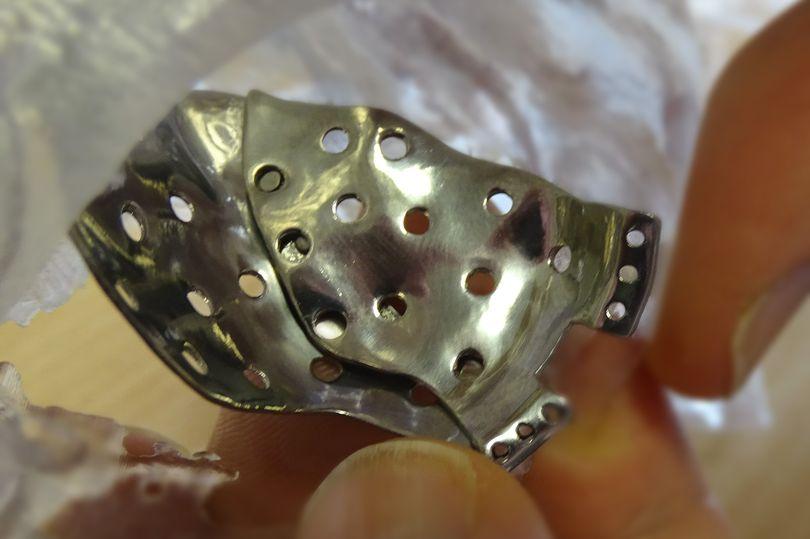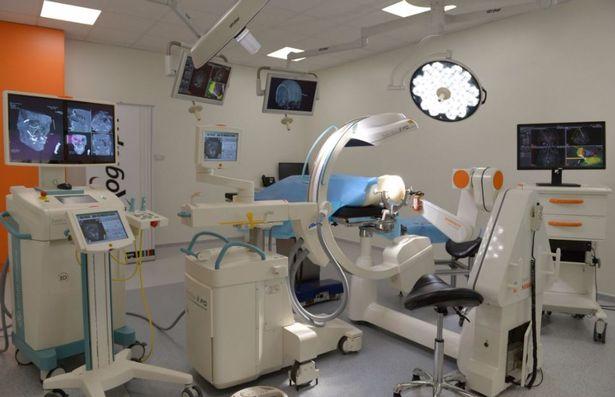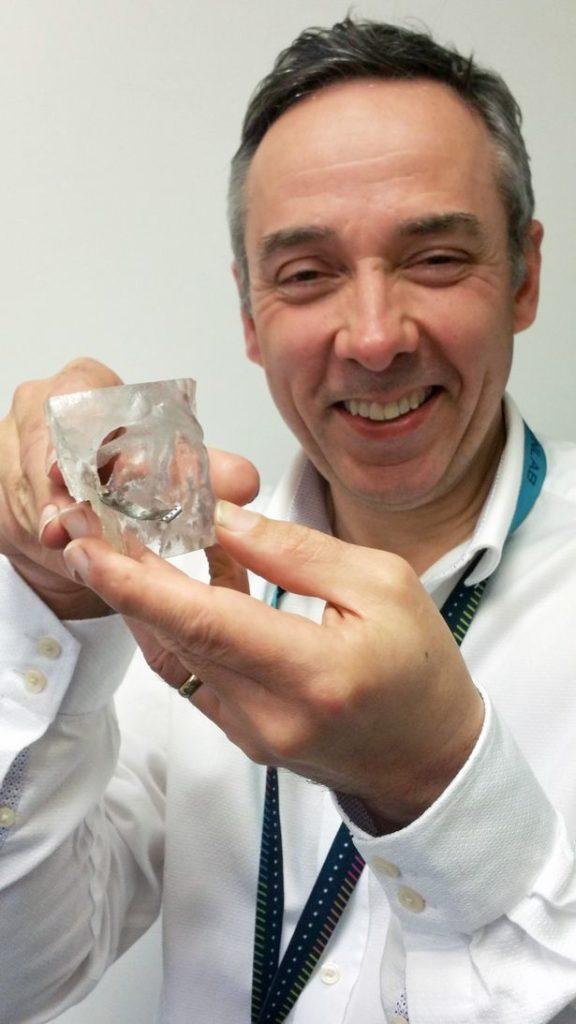 Welsh researchers and experts at Swansea-based, 750-bed Morriston Hospital have revealed a project called ADEPT, or Additive-manufacture for Design-led Efficient Patient Treatment, which allows surgeons to create 3D printed implants for patients with serious head and facial injuries or fractures.
Welsh researchers and experts at Swansea-based, 750-bed Morriston Hospital have revealed a project called ADEPT, or Additive-manufacture for Design-led Efficient Patient Treatment, which allows surgeons to create 3D printed implants for patients with serious head and facial injuries or fractures.
The award-winning project, designed specifically for patients suffering from diseases or significant damage to their facial structures, utilizes 3D printing technology to produce titanium implants quickly, with robust exteriors and reduced risk of long-term side effects.
For delicate facial structures, including the eye and the skull, it is extremely difficult for surgeons to efficiently create implants immediately after the patient goes through an initial scan. The manufacturing of most implants integrated and utilized by hospitals are outsourced to large-scale mass producing factories for cost-efficiency. Because of this partnership and reliance on the manufacturer, it often takes weeks to even months for the custom-built implant to arrive. During that time, the injury to the skull or any other facial components could worsen, especially if the production of implants is delayed.
As a solution to this global medical issue, researchers at Morriston Hospital have created a method of producing 3D printed titanium implants inside the facility, instantly after a scan is provided. Initially, a patient must undergo traditional scanning phases. Once CT scans and other reports are analyzed, 3D scanning software is used to map out a more detailed structure of the patient’s skull and facial structure. Using the 3D scanning software, titanium plates are 3D printed for immediate implant.
“The software will enable maxillofacial surgeons and technicians to design a cranioplasty – where people have part of the skull missing and you want to repair that with a metal plate. Similarly, if someone has a fracture to the floor of the eye socket – what we call a blow-out fracture – perhaps from a punch or a fall, you can repair that with a custom-made metal plate,” said Morriston maxillofacial laboratory services manager Peter Llewelyn Evans.
Previously, if surgeons and researchers had to 3D print implants, the hospital must have integrated two expensive pieces of technology: 3D scanning software with CT data rendering and a 3D printer. Evans states that ADEPT combines these two expensive technologies into one single platform, making it a more cost-efficient and reliable solution for hospitals and surgeons worldwide. The machines are being manufactured by Renishaw at their recently opened Healthcare Centre for Excellence.
“Surgeons anywhere in the UK, and indeed the world, will have the facility to design a custom implant that is far more likely to give better results because it fits the patient’s original anatomy. In the case of an eye fracture it will bring back the original volume of the orbit. Likewise, cranioplasty patients can have a contour of the skull that is better than what was available before,” said Evans.
Furthermore, ADEPT solves another major medical issue of delayed implants, which have proven to deliver less efficient and sometimes harmful results to patients.
A study led by Bernardo B. Passon entitled “Influence of immediate/delayed implant placement and implant platform on the peri-implant bone formation,” published in February 2016, discovered that immediate implants presented better bone implant contact (BIC) scores than delayed implants. More importantly, the study also revealed that after a 4-month healing period, immediately placed implants were integrated smoothly to the targeted area, compared to delayed implants which showed inferior results.
The full team of researchers and authors of the study includes: Daniel S. Marques de Castro, Maria Angelica R. de Araújo, Carlos d. R. P. de Araújo, Adriano Piatelli, and César A. M. Benfatti. The three-year ADEPT project, in addition to the maxillofacial team at Morriston Hospital and Renishaw, also involved researchers from PDR at Cardiff Metropolitan University and LPW Technology Ltd. It was funded by Innovate UK and the Engineering and Physical Sciences Research Council. Discuss in the ADEPT forum at 3DPB.com.
[Source/Images: WalesOnline]Subscribe to Our Email Newsletter
Stay up-to-date on all the latest news from the 3D printing industry and receive information and offers from third party vendors.
You May Also Like
3D Printing Unpeeled: New Arkema Material for HP, Saddle and Macro MEMS
A new Arkema material for MJF is said to reduce costs per part by up to 25% and have an 85% reusability ratio. HP 3D HR PA 12 S has been...
3D Printing News Briefs, January 20, 2024: FDM, LPBF, Underwater 3D Printer, Racing, & More
We’re starting off with a process certification in today’s 3D Printing News Briefs, and then moving on to research about solute trapping, laser powder bed fusion, and then moving on...
3D Printing Webinar and Event Roundup: December 3, 2023
We’ve got plenty of events and webinars coming up for you this week! Quickparts is having a Manufacturing Roadshow, America Makes is holding a Member Town Hall, Stratafest makes two...
Formnext 2023 Day Three: Slam Dunk
I’m high—high on trade show. I’ve met numerous new faces and reconnected with old friends, creating an absolutely wonderful atmosphere. The excitement is palpable over several emerging developments. The high...


































